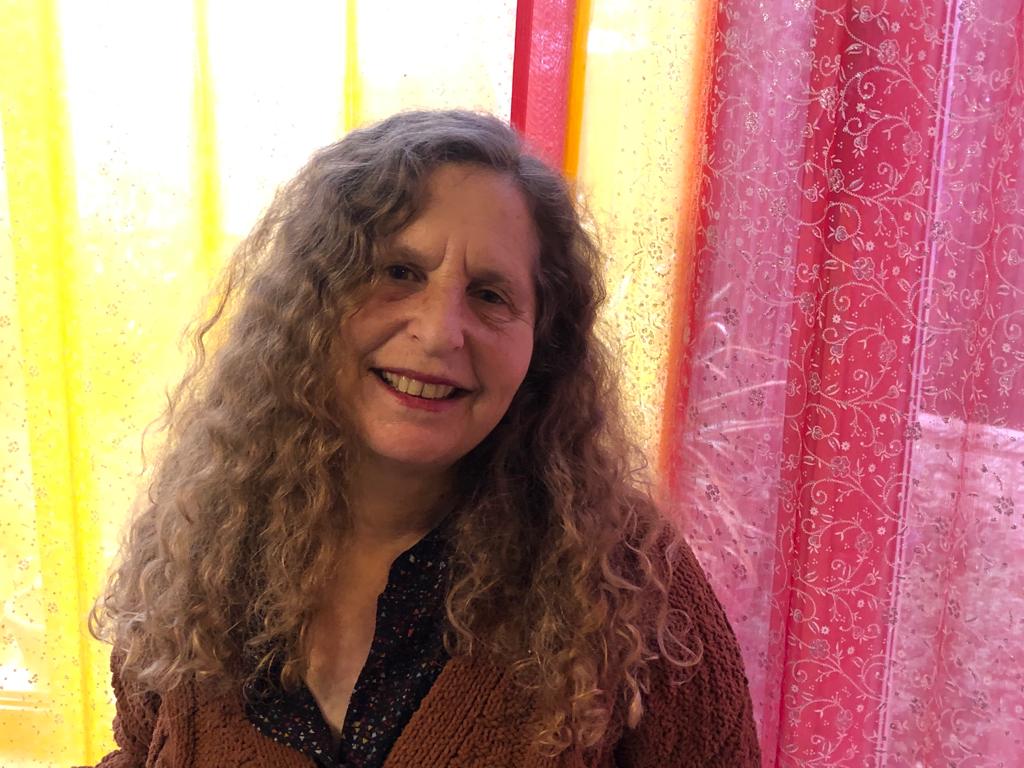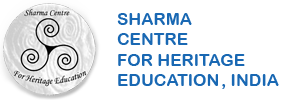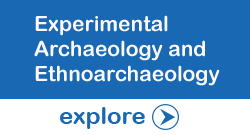Speakers-April 2021
Down Ancient Trails
APRIL 2021
Return to home page of Down Ancient Trails
30th, April, 2021, 6.30 pm (IST). Professor Gideon Shelach-Lavi is the Louis Freiberg Professor of East Asian Studies at the Hebrew University of Jerusalem Topic: The Transition to Agriculture and Sedentary Way-of-Life: Insights from Archaeological Research in Northeast China.
Abstract: The reasons and processes that led hunter-gatherers to transition into a sedentary and agricultural way of life are a fundamental unresolved question of human history. Over the years scholars debated many related issues such as what came first – sedentism or plant cultivation and domestication – and whether such transition occurred in an environment of plentiful resources or under stressful conditions. Other issues related to this fundamental change in human history are the social institutions and technologies that enabled it and the cultural changes that occurred as a result of this transition. In this talk I will present the results of an archaeological research I conducted in Northeast China. The results of this research, which include a systematic regional survey, excavations at two early Neolithic sites, paleobotanic and paleoclimatic research, will be used to address same of those fundamental issues which are relevant to our understanding of the early history of North China as well as for more general insights on global human history.
About: Prof. Gideon Shelach-Lavi is the Louis Freiberg Professor of East Asian Studies at the Hebrew University of Jerusalem. In recent years he held various positions at the Hebrew University, including the Chair of the Asian Studies Department, the Chair of the Institute of African and Asian Studies, and Vice Dean of the Faculty of Humanities. Prof. Shelach-Lavi received a Ph.D. in archaeology from the University of Pittsburgh (1996) and since 1995 he is conducting archaeological field works in North China and in Mongolia. He recently completed conducting the Fuxin Regional Archaeological Project in Liaoning province, China and have started a new regional project in Shandong province. He is also directing the The Wall project in Northeast Mongolia and China (funded by the ERC). Prof. Shelach-Lavi published 10 books and more than 70 papers in leading academic journals (including Science, PlosOne, Antiquity, Journal of Anthropological Archaeology, Journal of Archaeological Science, and more, including academic journals in China). Among his recent books are: The Archaeology of China: From Prehistory to the Han Dynasty (Cambridge University Press, 2015); Prehistoric Societies on the Northern Frontiers of China: Archaeological Perspectives on Identity Formation and Economic Change during the First Millennium BCE (Equinox, 2009); Chifeng International Collaborative Archaeological Project (co-author, Pittsburgh 2011), Animals and Human Society in Asia: Historical, Cultural and Ethical Perspectives (co-editor, Palgrave Macmillan, 2019), The Birth of Empire: The State of Qin Revisited (co-editor, University of California Press 2013).
23rd April, 2021, 6:30 pm (IST). Professor Simon Kaner, Executive Director of the Sainsbury Institute for the Study of Japanese Arts and Cultures, Head of the Centre for Archaeology and Heritage, Director of the Centre for Japanese Studies at the University of East Anglia. Topic: Prehistoric Japanese Stone circles – comparative perspectives.
Abstract: In the summer of 2021, 17 prehistoric Jomon sites from northern Japan will be put forward as UNESCO World Heritage, including four stone circles, Oyu, Isedotai, Komakino and Omori Katsuyama. Drawing on research undertaken as part of an ongoing collaborative and comparative project with English Heritage and the Stonehenge and Avebury World Heritage Site in the UK, this talk will introduce current thinking about Jomon stone circles. The inhabitants of the Japanese archipelago during the Jomon period (from around 16,000 – 2500 years ago) were fisher-gatherer-hunters, and their stone circles are a relatively rare manifestation of monumentality among foraging peoples. Some of these sites have been known to audiences beyond Japan for many years, including the Oshoro circles in Hokkaido (not included in the World Heritage nomination), discussed by Neil Gordon Munro in his synthesis of Japanese archaeology, Prehistoric Japan, published in 1908. I will consider why the Japanese prehistoric record deserves greater attention in global archaeology, and the broader importance of comparative approaches in archaeology, as pursued through projects such as Global Perspectives on British Archaeology https://global-britisharchaeology.org .
About: Professor Simon Kaner is an archaeologist specialising in the prehistory of Japan. He is Executive Director of the Sainsbury Institute for the Study of Japanese Arts and Cultures, where he is also Head of the Centre for Archaeology and Heritage. He is also Director of the Centre for Japanese Studies at the University of East Anglia. A Fellow of the Society of Antiquaries of London, he has taught and published on many aspects of East Asian and European archaeology. After reading archaeology at Cambridge (including being taught South Asian archaeology by Raymond and Bridget Allchin and winning the Ghulam Yazdani Prize for a dissertation on the Neolithic of the Deccan), he has undertaken archaeological research in Japan, the UK and elsewhere and worked for several years in archaeological heritage management in the UK. His research interests include: Japanese prehistory and the history of archaeology in Japan; the urban historic environment in Japan in comparative perspective; Japanese cultural heritage and the international role of Japanese heritage management. He currently leads the Shinano River project, investigating the development of historic landscapes along the longest river system in the Japanese archipelago, and Nara to Norwich: art and belief at the ends of the Silk Roads, 500-1000 CE. His recent publications include An Illustrated Companion to Japanese Archaeology (2nd Ed. 2020, Archaeopress, Oxford) and The Archaeology of Medieval Towns: Case Studies from Japan and Europe (2020, Archaeopress, Oxford). He is Co-Editor of the Japanese Journal of Archaeology (www.jjarchaeology.jp). He is currently co-editing the Oxford Handbook of the Archaeology of Korea and Japan (Oxford University Press) and a new volume on the Origins of Agriculture in Japan in Global Perspective (Springer), and Approaches to Archaeological Heritage Management in Japan (Oxford, Archaeopress) all of which are due for publication over the coming year.
 April 9th, 2021, 6.30 pm (IST). Professor Leore Grosman, Institute of Archaeology, The Hebrew University of Jerusalem. The Natufian culture - the harbinger of food producing societies.
April 9th, 2021, 6.30 pm (IST). Professor Leore Grosman, Institute of Archaeology, The Hebrew University of Jerusalem. The Natufian culture - the harbinger of food producing societies.
Abstract - The Near East in general and the ‘Levantine Corridor’ in particular provide archaeological evidence for the unique transition from hunter-gatherer to agricultural village societies. The Natufian culture (15,000–11,500 cal BP) is recognized as the harbinger of food-producing cultures in the southern Levant. This culture is characterized by remarkable changes in subsistence, settlement, technology, social structure, and ritual practice. These changes were central to the transformation from Epipalaeolithic hunter-gatherer to Neolithic agricultural communities. Current talk will focus on the dynamics during the time of the cultural ‘cross-roads’ between the Palaeolithic and the Neolithic ways of life, to zoom onto the very end of the Natufian culture. New evidence from two very Late Natufian sites in Israel will be presented — the burial cave of Hilazon Tachtit, and the village of Nahal Ein Gev II in close proximity to the Sea of Galilee.
About: Leore Grosman is a professor at the Institute of Archaeology, The Hebrew University. She is engaged in research that seeks to uncover the history of the transition from hunting and gathering to farming, a transition that forever changed the course of human existence. She has been focusing on the Epipaleolithic cultures, in particular the Natufian (ca. 15,000-11,500 BP) and the transition to the early Neolithic. Accordingly, she has initiated and directed several excavation projects: Hilazon Tachtit project, a 12,000-year-old Natufian cave site. The results of this work have led to groundbreaking publications in the most prestigious periodicals. For the past 10 years she has been directing an excavation project at Nahal Ein Gev II, a Natufian village site with a complex plan and massive architecture. In addition, she is engaged in the study of the graves at Hayonim cave (with Prof. Anna Belfer-Cohen). Neolithic studies integrate the study of flint quarries at Hatula and Kaizer hill sites (with Prof. Naama Goren-Inbar) and an early Neolithic site at Nahal Zihor, Arava.
The second path of research is the incorporation of exact sciences methodologies into archaeological research. In 2010 she founded, and continue to direct, the Computational Archaeology Laboratory, which focuses on developing mathematical and computational tools to address archaeological questions. The dynamic group of students under her supervision takes part in both archaeological field research and archaeological sciences, to join forces in the research goals that they have set.


